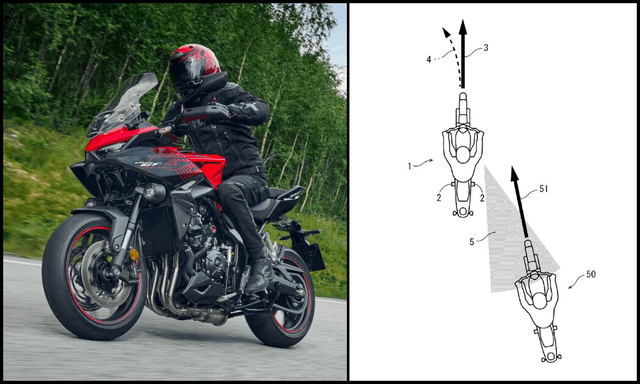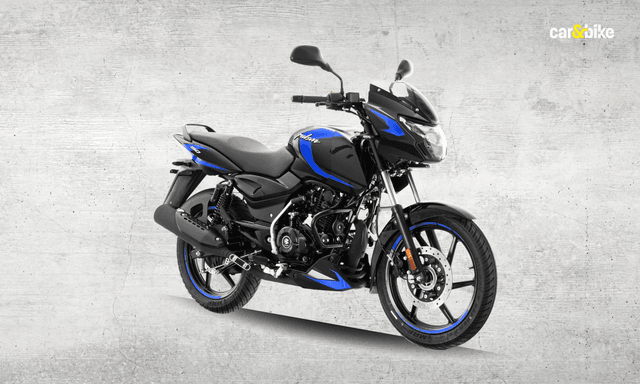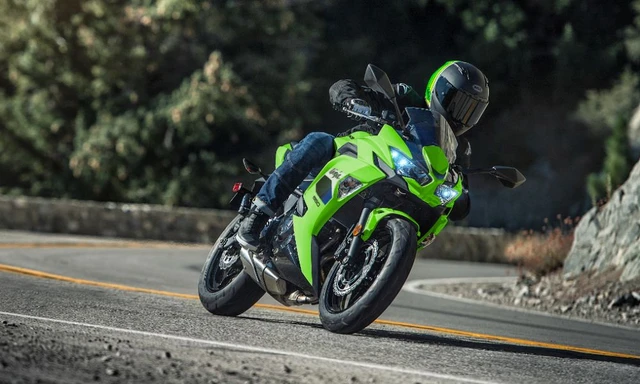Is Railways Becoming The Preferred Way To Transport Vehicles?

- Mahindra used the train to export 87 Bolero Pick-Ups to Bangladesh
- Rail transport is becoming a very viable option for the auto industry
- Railways is eyeing at a 20% share in automotive logistics by FY2022
Rail transport is soon becoming a very viable option for the automotive industry. That can be seen by the number of players opting for this route in the recent past. Now, before railways came into the picture transportation of vehicles was mainly done by trucks and the heavy reliance on this form of transport also led to delays, caused by breakdowns or traffic enroute to the final destination. However, transporting vehicles using trains, saves on all that and in fact save fuel and reduce CO2 emissions which is why Railways is eyeing at a 20 per cent share in automotive logistics by the next financial year. It is in fact hoping to achieve a growth of 10 per cent every year post that. While a lot of automobile manufacturers are already using this mode of transportation, Mahindra recently, joined the bandwagon opting to export its vehicles using rail transport.
undefinedBoosting Automobile Exports: Railways loaded 87 pick-up vans ???? from Navi Mumbai in Maharashtra to Benapole in Bangladesh ????????
— Piyush Goyal (@PiyushGoyal) October 25, 2020
Offering safe, swift & economical logistic solutions, Railways has emerged as a preferred mode for automobile transportation.#MoveItLikeRailways pic.twitter.com/90QP9qZytG
In a tweet, Piyush Goyal, Minister of Railways, showed a video with Mahindra Bolero Pick-Ups being loaded on a train heading to Bangladesh. He said, “Boosting Automobile Exports: Railways loaded 87 pick-up vans from Navi Mumbai in Maharashtra to Benapole in Bangladesh. Offering safe, swift & economical logistic solutions, Railways has emerged as a preferred mode for automobile transportation.”

Indian Railways is eyeing a 20 per cent share in automotive logistics by the next financial year
undefinedRailways is certianly working out to be an efficient way of transporting vehicles long distance. Thankyou @PiyushGoyal for all the support we are getting for IR. https://t.co/bWJzga2Gxa
— Pawan K Goenka (@GoenkaPk) October 25, 2020
In fact, Dr. Pawan Goenka, Managing Director, Mahindra and Mahindra too responded to this tweet stating that Railways has become an efficient way of transporting vehicles long distance. And there's proof to the pudding too. Let's take the case of Maruti Suzuki India. The company first started using railways to send vehicles in March 2014 and since then it says that it has saved more than 1 lakh truck trips and 100 million litres of fuel. It has come a long way from using a single deck converted rakes to deploying high speed, high capacity new design double deck rakes.
Also Read: Maruti Suzuki Transported Over 6 Lakh Cars Through Indian Railways In 6 Years

Maruti Suzuki Transported Over 6 Lakh Cars Through Indian Railways
These single deck wagons were christened as New Modified Goods (NMG) with a capacity to handle 125 cars. With growing volumes, Indian Railways' design arm RDSO designed high capacity dedicated wagons called BCACM after taking suggestions from several OEMs including Maruti Suzuki. The new BCACBM rakes are more flexible and offer a capacity of 318 cars.
In the financial year 2019-20, the company despatched over 1.78 lakh cars through Indian Railways, which is 15 per cent more as compared to the previous year. It also accounts for nearly 12 per cent of the total sales recorded by the carmaker in the year. Employing the rail mode, the Indo-Japanese car manufacturer counterbalanced around 3,000 Megatons(MT) of CO2 emissions, witnessing a CAGR of over 18 per cent.
Also Read: Kia Motors India Has Transported 5,000 Cars Using Indian Railways So Far
Hyundai India too has been using the railway network since 1999 but were able to use this mode with much more steady volumes since 2013. Currently, over 10 per cent of the company's total volumes are despatched through the railway route from two terminals near its factory, namely Melpakkam and Wallajahbad.

Kia Motors India too has used the Indian railways to transport over 5000 cars so far
During the pre-COVID times, an average of 10 per cent of the company's monthly volumes were despatched by rail. In August 2020, this proportion reached a record 13 per cent of monthly volumes, given the currently higher available capacity in rail rakes and fluctuations in manpower availability in road networks. In a query raised by carandbike about the future of using this transport, a Hyundai spokesperson said, “As the months go by the dynamics may vary slightly, but we anticipate that a minimum of 10% proportion through rail will continue in the future.”
When asked whether railways could become a preferred mode of transport, Hyundai said, “Railways have been quite supportive in providing various impetus like streamlining the rakes and processes for faster overall transit times, waiver of demurrage for idling rakes belonging to logistics service provider etc. When coupled with a steady infrastructure-led impetus by the Government of India, we are sure that this mode will only become more and more preferred by not just carmakers but by other industries as well.”
Latest News
 car&bike Team | Dec 27, 2025Honda Patents Steering Assist Tech For MotorcyclesHonda patents a steering assist concept that subtly intervenes during blind-spot risks.1 min read
car&bike Team | Dec 27, 2025Honda Patents Steering Assist Tech For MotorcyclesHonda patents a steering assist concept that subtly intervenes during blind-spot risks.1 min read Jafar Rizvi | Dec 27, 2025Listed: Car Manufacturers That Will Hike Prices From January 2026Based on the announcements made so far, the price increase across car models is expected to range between 2 and 3 per cent.3 mins read
Jafar Rizvi | Dec 27, 2025Listed: Car Manufacturers That Will Hike Prices From January 2026Based on the announcements made so far, the price increase across car models is expected to range between 2 and 3 per cent.3 mins read Jaiveer Mehra | Dec 26, 2025India-Spec New Renault Duster Teased Ahead Of Jan 26 DebutA new teaser video provides brief glimpses of the upcoming all-new SUV which seems to get some notable styling differences over its global sibling.1 min read
Jaiveer Mehra | Dec 26, 2025India-Spec New Renault Duster Teased Ahead Of Jan 26 DebutA new teaser video provides brief glimpses of the upcoming all-new SUV which seems to get some notable styling differences over its global sibling.1 min read Jaiveer Mehra | Dec 26, 2025New Mahindra XUV 7XO Teaser Confirms 540 Degree CamerasLatest teaser video confirms the SUV will get the new 540 degree camera set-up from the XEV series as well as a few other features.1 min read
Jaiveer Mehra | Dec 26, 2025New Mahindra XUV 7XO Teaser Confirms 540 Degree CamerasLatest teaser video confirms the SUV will get the new 540 degree camera set-up from the XEV series as well as a few other features.1 min read car&bike Team | Dec 24, 2025Updated Bajaj Pulsar 150 Launched At Rs 1.09 Lakh: Gets LED Lighting, New ColoursThe Pulsar 150 is offered in three variants with prices topping out at Rs 1.15 lakh (ex-showroom).2 mins read
car&bike Team | Dec 24, 2025Updated Bajaj Pulsar 150 Launched At Rs 1.09 Lakh: Gets LED Lighting, New ColoursThe Pulsar 150 is offered in three variants with prices topping out at Rs 1.15 lakh (ex-showroom).2 mins read Janak Sorap | Dec 24, 20252026 Kawasaki Ninja 650 Launched at Rs 7.91 LakhWith E20 compliance, the 2026 Ninja 650 receive a new colour update and a premium price tag.1 min read
Janak Sorap | Dec 24, 20252026 Kawasaki Ninja 650 Launched at Rs 7.91 LakhWith E20 compliance, the 2026 Ninja 650 receive a new colour update and a premium price tag.1 min read
 Jafar Rizvi | Dec 24, 2025MG Windsor EV 38 kWh Long-Term Report: IntroductionThe Windsor EV has joined our garage, and before it settles into daily duty, I took it out to get a sense of what living with an electric car is like.4 mins read
Jafar Rizvi | Dec 24, 2025MG Windsor EV 38 kWh Long-Term Report: IntroductionThe Windsor EV has joined our garage, and before it settles into daily duty, I took it out to get a sense of what living with an electric car is like.4 mins read Seshan Vijayraghvan | Dec 23, 20252026 Kia Seltos Review: Formula Is Spot On, But Is The Timing Right?The 2nd-gen Kia Seltos has arrived, but it has the challenge of facing strong rivals like the Victoris and Sierra. The question is simple - Does it still have what it takes?9 mins read
Seshan Vijayraghvan | Dec 23, 20252026 Kia Seltos Review: Formula Is Spot On, But Is The Timing Right?The 2nd-gen Kia Seltos has arrived, but it has the challenge of facing strong rivals like the Victoris and Sierra. The question is simple - Does it still have what it takes?9 mins read car&bike Team | Dec 26, 2025Tata Punch EV Long-Term Second Report: Highway Performance, Pros & ConsAfter a week of living with the Tata Punch EV Long Range—including a proper Mumbai-Nashik highway test—we've learned what this little electric SUV is really made of.1 min read
car&bike Team | Dec 26, 2025Tata Punch EV Long-Term Second Report: Highway Performance, Pros & ConsAfter a week of living with the Tata Punch EV Long Range—including a proper Mumbai-Nashik highway test—we've learned what this little electric SUV is really made of.1 min read Seshan Vijayraghvan | Dec 22, 20252026 Tata Harrier & Safari 1.5 Hyperion Review: By The Power Of Petrol!The new Tata Harrier and Safari petrol packs a new 1.5-litre TGDI Hyperion engine, but is it an ideal alternative to the diesel version?7 mins read
Seshan Vijayraghvan | Dec 22, 20252026 Tata Harrier & Safari 1.5 Hyperion Review: By The Power Of Petrol!The new Tata Harrier and Safari petrol packs a new 1.5-litre TGDI Hyperion engine, but is it an ideal alternative to the diesel version?7 mins read Bilal Firfiray | Dec 19, 2025Maruti Suzuki e-Vitara Review: Worth The Wait?After a long wait, the first-ever electric Maruti Suzuki is here. It’s the e-Vitara, and it comes with a few promises. But arriving this late, is it worth the wait? Or is it a case of too little, too late?9 mins read
Bilal Firfiray | Dec 19, 2025Maruti Suzuki e-Vitara Review: Worth The Wait?After a long wait, the first-ever electric Maruti Suzuki is here. It’s the e-Vitara, and it comes with a few promises. But arriving this late, is it worth the wait? Or is it a case of too little, too late?9 mins read























































































































